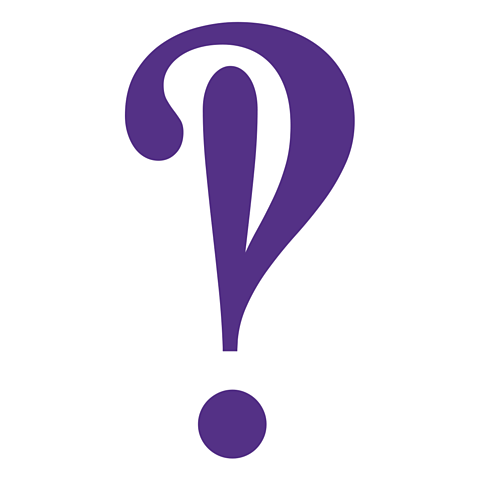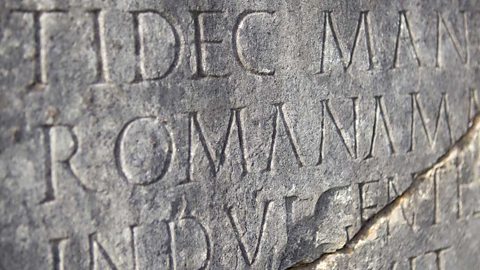Just like the vocabulary we use when we write, the full stops, commas and dreaded semi-colons we punctuate with have also changed over time.
Some once common punctuation marks have fallen out of fashion, while new ones have been suggested to keep up with the way we write and speak today.
Here are five punctuation marks that have either dropped out of use, or never caught on in the first place.

Interrobang
What do you mean youÔÇÖve never heard of an interrobangÔÇ¢ This nifty combination of a question mark and an exclamation point was first proposed by advertising executive and copywriter Martin Speckter in 1962. The name comes from combining ÔÇÿinterrogationÔÇÖ and ÔÇÿbangÔÇÖ ÔÇô which is what printers sometimes call an exclamation mark.
Even though a few manual typewriters introduced a key for the interrobang in the 1960s, like much ÔÇÿinventedÔÇÖ punctuation it failed to catch on, though you can still type it using certain computer fonts. But is it really too much trouble just to type both?!


Percontation point
People have been trying to come up with a way of expressing irony or sarcasm in punctuation for hundreds of years. In the 1500s, printer Henry Denham proposed using the ÔÇÿpercontation pointÔÇÖ, which was a reversed question mark, to indicate an open-ended question - ie a question that can't be answered with 'yes' or 'no'. With time, the percontation point also became used to indicate a rhetorical question. A rhetorical question can be veiled in irony, so some saw in the percontation point an answer to their quest for a punctuation mark to denote irony or sarcasm.
And in the 17th Century, English vicar John Wilkins proposed the ÔÇÿirony markÔÇÖ, which was an upside down exclamation mark. He also invented the transparent beehive, another idea that unfortunately failed to take off.


Hedera
Language can be flowery but so, it turns out, can punctuation. The hedera is a heart shaped mark, surrounded by ivy, which was originally used to mark a paragraph break without the text moving to a new line. Or sometimes it was used simply for decoration.The hedera is a kind of fleuron, which is a glyph (or symbol) resembling plants or flowers. Fleurons, sometimes called ÔÇÿprintersÔÇÖ flowersÔÇÖ, are among the oldest punctuation marks.


Asterism
An asterism is made up of three asterisks arranged in a triangular pattern. It was once used in printed text to break up long passages into easier to digest chunks, and was also sometimes used to stand in for a name, or other detail, that was unknown to the author.
These days it is rarely seen. You may have seen a version which has three asterisks in a row (***) and is often used in books, usually on a line of its own, to break up longer sections of text within a chapter into logical sections. This kind of symbol has cute name: 'dinkusÔÇÖ.
The word asterism is also used by astronomers to denote any arrangement or group of stars in the sky smaller than a constellation.


Love point
Herve Bazin was a French novelist and poet who proposed a whole set of new punctuation marks in his 1966 book Plumons lÔÇÖOiseau (LetÔÇÖs Pluck The Bird). Among them were the 'doubt point', which looked like a zig-zaggy exclamation mark, and the ÔÇÿcertainty pointÔÇÖ which resembled an exclamation mark with a cross, a little like a small ÔÇÿtÔÇÖ.
But the cleverest must be his ÔÇÿlove pointÔÇÖ which looks like two tilted kissing question marks arranged to form a heart.Sadly, the fact that these new symbols were impossible to type on manual typewriters meant that they were never widely used, even by Bazin himself.
But maybe his idea of new punctuation to express emotions was just a bit ahead of its time. After all, arenÔÇÖt the emoticons we pepper out texts and emails with a new, incredibly versatile and expressive kind of punctuation? ƒñö
This article was published in April 2023

Typography - AQA
Learn about typography including the structure of letters, fonts, typeface, decorative features and the effect they have on aesthetics and legibility.

The pedantic punctuation quiz. quiz
You've tested your spelling, now it's time for your punctuation.

Five words that have changed their meaning
Why we used to call serious people 'silly' - and other language curiosities.
